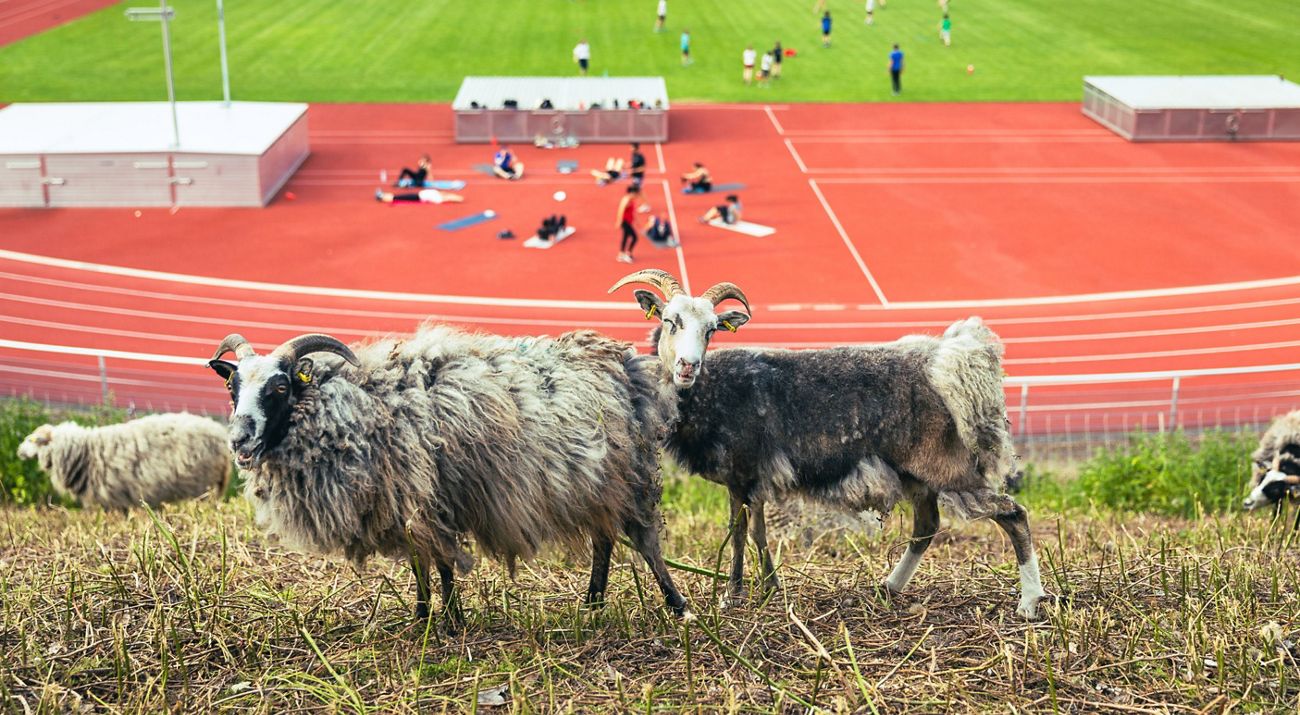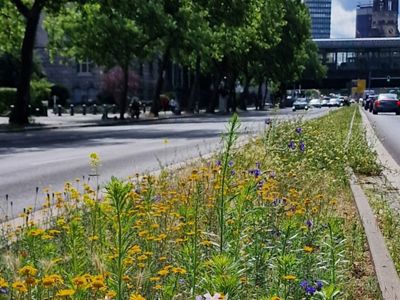Adapting Europe's Urban Landscapes to Climate Change through the Power of Nature
A multi-pronged approach to building climate resilience in cities.
How the German capital is greening up to adjust to the changing climate.
by Martina Fürstenberger

As urban populations grow, the effects of climate change become increasingly apparent. Urban areas, dominated by cars, concrete, and asphalt, absorb heat throughout the day and retain it at night, creating an oven-like effect. Impermeable surfaces not only exacerbate heat waves but also prevent rainwater from seeping into the ground, which can overwhelm drainage systems during heavy downpours. This leads to heat stress for people, animals and plants, while increasing the risk of flooding. So, what's the solution?
Experts have long advocated for more greenery in cities. Parks, trees and vegetation serve vital functions: they purify the air, cool the surroundings, and absorb and retain stormwater. They also create habitats for small wildlife and insects, boosting biodiversity. Additionally, urban greening has a profound impact on mental well-being, helping people feel more at ease and refreshed.
While there is a broad consensus that our cities must embrace greener solutions, local administrations struggle to find the resources needed to bring these changes to life.
In response, The Nature Conservancy Europe (TNC) launched the Europe Urban Greening Program in 2020. "To assist cities and municipalities in tackling the enormous challenge of climate adaptation, we collaborate closely, integrating practical research with pilot projects," says Program Director Jamie Chan. Partnering with Berlin’s Charlottenburg-Wilmersdorf district office, TNC launched the first urban greening project five years ago. It focuses on creating a scientific framework for urban grassland development, serving as the foundation for designing and enhancing green spaces in the district. Additionally, it fosters pilot projects that can serve as models for other municipalities.
Sounds ambitious? It’s achievable if just one percent of the district’s roofs are greened annually. With 311 hectares of flat rooftops, the potential for new green space is immense. This figure comes from the Urban Grassland Plan, developed with the district office and finalised in 2024. Green roofs bring significant benefits—they absorb rainwater, easing strain on sewers, while evaporation cools the surroundings. Traffic areas also hold promise: 56 medians are identified as prime candidates for improvement, according to the study.
As part of the project, a method was devised to quickly assess green space quality, alongside curated lists of climate-resilient and ecologically valuable plant species—key tools for efficient future planning.
To explore this, TNC collaborated with district authorities and the Senate Administration to host a series of workshops. Interest in the topic is high - early 2025, around 70 experts from science, administration, and practice discussed "Guidelines and Species Selection for Seeding and Planting in an Urban Context". They assessed species selection based on local conditions, costs, maintenance needs, ecological benefits, aesthetics, and seed availability. The debate over non-native species remains ongoing.
"We have found that plant selection depends on diverse, site-specific factors. While establishing universal criteria is challenging, continuing the discussion is essential," says Maria Knaus, who is leading the Urban Grassland Project in Berlin. "There may not be a standardised species list, but at least city-wide recommendations within Berlin’s administration could emerge," noted Dr. Ulrich Heink from the Nature Conservation Office Charlottenburg-Wilmersdorf.
The sheep on Wilmersdorf Stadium’s slopes don't care about selection criteria. They simply eat what they like, benefiting nature in the process. As part of a pilot project, their grazing is being tested as a natural way to enhance the grassland. A few years ago, the stadium looked very different. In 2005, the grandstands were removed, and the slopes became overgrown with ash maple and garden blackberry - dense, species-poor growth that required regular mowing.
To improve ecological value, sheep were introduced in 2021. Their natural grazing helps control shrubs, making room for new species. To further boost biodiversity, drought-resistant plants were introduced in selected grazed areas, with their growth monitored by the Technical University.

A busy road transformed into a species-rich, colourful meadow.
While sheep graze peacefully in Wilmersdorf Stadium, cars rush by on Hardenbergstrasse. Yet, even here, busy roads can be transformed into species-rich meadows. In autumn 2023, five different meadow mixtures were sown on the median strip of Hardenbergstrasse, creating a colourful aspect and testing the species' resilience to street conditions.
Meanwhile, Berlin's public nursery in Charlottenburg-Wilmersdorf is expanding to ensure a local supply of plants and seeds and serves as a coordination hub for other districts. Supported by the Urban Grassland Project, the nursery collaborates with the Nature Conservation Office to cultivate native perennials and test non-native species from Southeastern Europe.
Charlottenburg-Wilmersdorf now has a clear roadmap for future greening through the Urban Grassland Plan, along with the tools to make it happen. Other districts can adopt the study, but success relies on a broad coalition, beyond government agencies and political leaders. Local groups, schools, sports clubs, civic organisations and residents all play a role. Their contributions over the years have helped the district become greener, keeping it a livable place for everyone.
Although The Nature Conservancy's Urban Greening Program officially concludes in June 2025, its five-year span has sparked lasting initiatives and built structures that will continue to shape urban greening. Pilot projects already demonstrate the tangible benefits of greening efforts. “We’ve learned that there are many ways to make cities more climate-resilient,” says Jamie Chan.
Alongside Berlin, the program has partnered with the city of Stuttgart and Environmental Action Germany (DUH). The insights gained from these projects will hopefully inform climate adaptation strategies in municipalities across Germany and beyond.
*This program is funded by Amazon’s Right Now Climate Fund.
Martina Fürstenberger is a German freelance journalist and writer, focusing on energy, climate, and the environment.
Read more about our urban greening work in Germany.